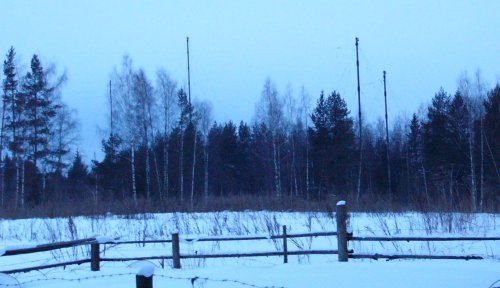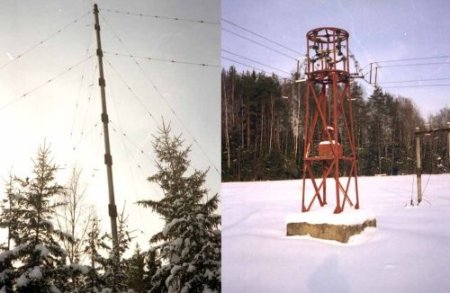Mystery Signals of the Short Wave
Dedicated to the more unusual, strange, bizarre and apparently meaningless signals on the short wave bands !
From the Archives
Russian Woodpecker | Yosemite Sam |
Site Information
What's New | About Me | Email |
The Buzzer - S28 (Formerly XB)
Frequency: 4625 kHz
Secondary Frequencies Heard: 3842 kHz & 3877 kHz

A regular signal with a rough rasping modulated tone heard on 4625 kHz, "The Buzzer" is believed to have been transmitting since the early '80's.
During 1994 transmissions of the 4625 kHz signal were heard for several hours simulcast on 5310 kHz (June 21 1994), and from 1200hrs to 1800hrs UTC on 5211 kHz (Sept. 1994). This may have been while testing and setting-up was taking place.
This signal transmits around the clock, although due to propagation is usually only heard during the late afternoons and hours of darkness in the UK. Sounds a bit like a time signal, but sends around 25 pulses per minute. At 1 minute to the hour, the signal changes to a continuous tone rising and falling.
Accuracy is variable and the station has been heard sending the "hour" tones up to 3 minutes either way.

"The Buzzer" (50 kb)
On January 16 2003 the tone used by the station changed to a higher pitched tone with a slightly longer duration, giving around 20 pulses per minute, although the signal has now reverted back to the original tone and duration.
"The Buzzer" also sends messages periodically, which are usually around Christmas. On 25 December 1997, at 2158 UTC, the tone ceased and a message was read out in Russian.
In personal E-Mail, Rimantas Pleikys in Lithuania has provided me with a full translation of the message.
"This is UVB-76 18008 BROMAL 74279914" (Repeated several times).
UVB-76 is believed to be the callsign of the station which would indicate a Ukranian source under the international agreement on callsign allocation, however the station has been reliably tracked to Russia.
Rimantas adds that the word BROMAL, which was spelt out phonetically, has the same international meaning - that being a chemical. This would seem to be a randomly selected Codeword.
Similar messages have been intercepted by monitors at various times. It is believed that the frequency is monitored at one or more sites on a permanent basis, and that the receiving stations, on hearing one of the messages must immediately contact "control" and repeat the message and codeword to show that they are alert and monitoring.
It is believed the station is military in origin possibly connected with the Strategic Rocket Forces who control the nuclear ICBM missiles. Jan Michalski on his webpage, (see below), states that the station is part of the Central Communications Hub of the General Staff of the Army, and serves the same purpose as the US EAM messages.

The transmitter site is in woodland near Povarovo, in Western Russia, about 50 Km NW of Moscow, and in 2004/5 was tracked and photographed by a group of Russian lads who were kind enough to email me the photographs which are on displayed on this page.
Lower power back-up transmitters are thought to exist (though these may be at an alternative site), as simulcast transmissions of the "Buzzer" have been heard on 3842 kHz & 3877 kHz at different times in parallel with the 4625 kHz transmission.
A rare report of "The Buzzer" from a Pennsylvania, USA member of ENIGMA 2000, in March 2004, reported the signal as "Weak but audible in AM mode".
Sincere thanks to Rimantas Pleikys for his help and for making his findings available to me, and to the Russian "Urban Explorers" who visited the site.
For technical information on this station, visit Jan Michalski's page Radio Station UVB-76